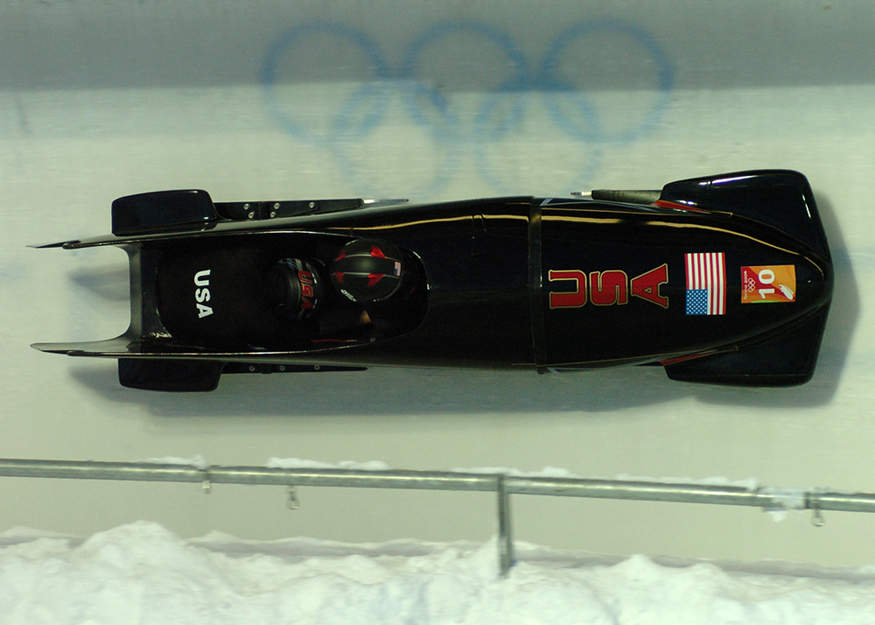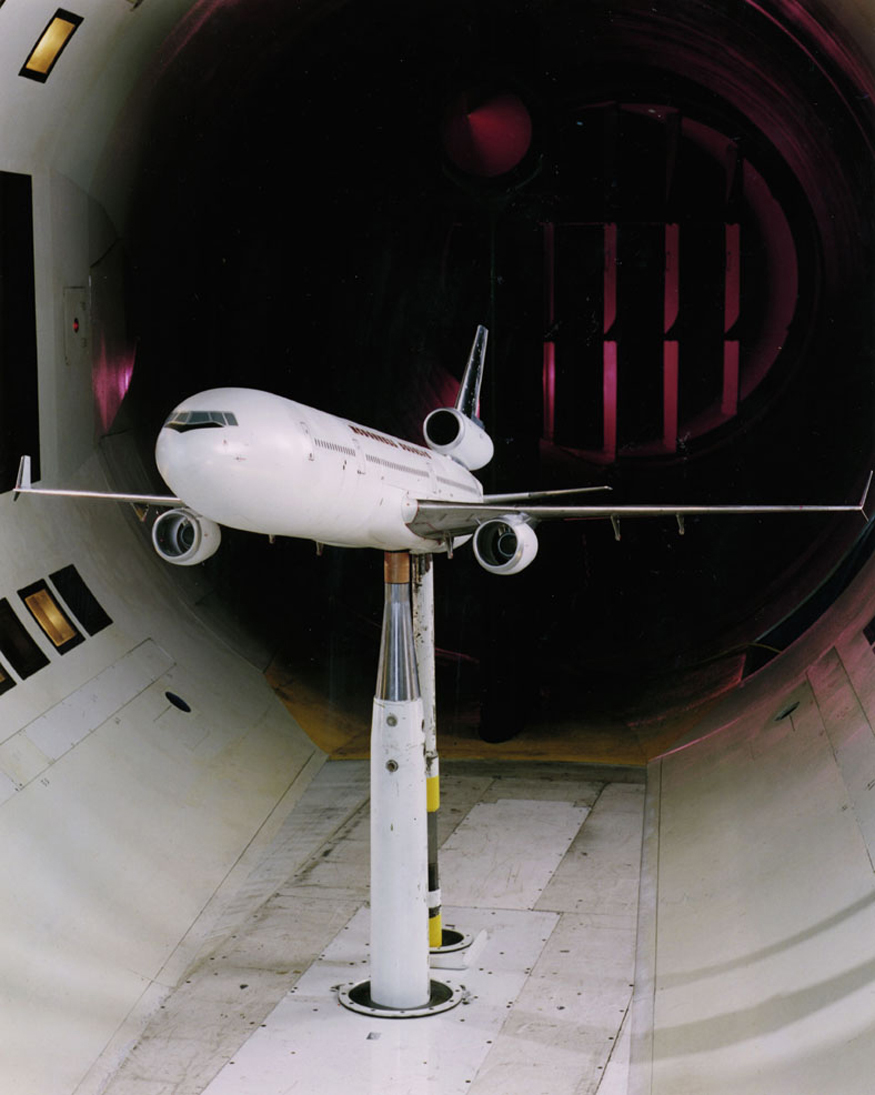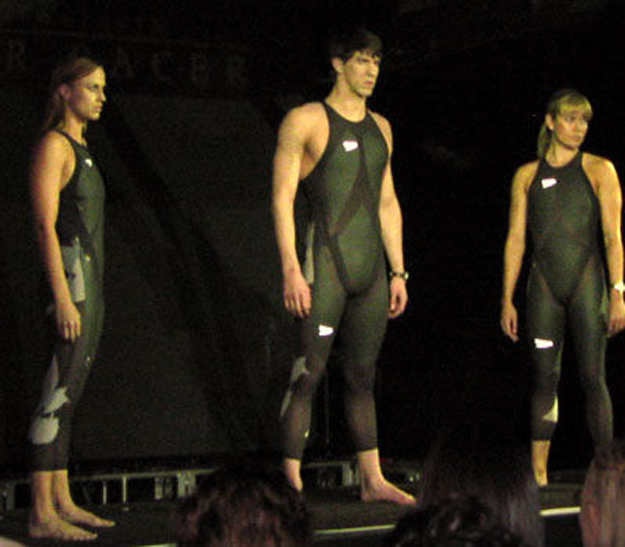Dynamics: Force and Newton’s Laws of Motion and Applications: Friction, Drag and Elasticity
31 Drag Forces
Learning Objectives
- Express mathematically the drag force.
- Discuss the applications of drag force.
- Define terminal velocity.
- Determine the terminal velocity given mass.
Drag Force
When an object moves through a fluid—either air or liquid—it experiences a drag force that resists its motion. You feel this when:
-
Moving your hand quickly through water
-
Extending your arm out a car window at high speed
-
Walking against a strong wind
Drag increases dramatically with speed and depends on several factors:
-
Shape of the object
-
Size (frontal area)
-
Velocity
-
Fluid density (e.g., air vs. water)
Like friction, drag always opposes motion. But unlike simple friction, drag increases nonlinearly with speed. For most human-scale activities in air, the drag force [latex]F_D[/latex] is proportional to the square of velocity:
[latex]F_D \propto v^2[/latex]
This becomes more precise in the following form:
[latex]F_D = \frac{1}{2} C \rho A v^2[/latex]
Where:
-
[latex]C[/latex] is the drag coefficient (dimensionless)
-
[latex]\rho[/latex] is the fluid density (kg/m³)
-
[latex]A[/latex] is the frontal area of the object (m²)
-
[latex]v[/latex] is the velocity (m/s)
Figure 31.1 shows how aerodynamic shaping improves performance in sports and vehicles by minimizing drag.

Reducing Drag in Health and Sports
In athletics and medical biomechanics:
-
Swimmers and cyclists wear smooth suits to reduce drag.
-
Prosthetics and wheelchairs are shaped to improve aerodynamics and ease movement.
-
In medicine, drag affects how air or liquid moves through tubes, airways, or blood vessels.
The drag coefficient [latex]C[/latex] is often determined experimentally using wind tunnels or water channels.
The value of the drag coefficient, [latex]C[/latex] , is determined empirically, usually with the use of a wind tunnel. (See Figure 31.2).

The drag coefficient can depend upon velocity, but we will assume that it is a constant here. Table 31.1 lists some typical drag coefficients for a variety of objects. Notice that the drag coefficient is a dimensionless quantity. At highway speeds, over 50% of the power of a car is used to overcome air drag. The most fuel-efficient cruising speed is about 70–80 km/h (about 45–50 mi/h). For this reason, during the 1970s oil crisis in the United States, maximum speeds on highways were set at about 90 km/h (55 mi/h).
The smoother and narrower the object, the lower the drag coefficient. Athletes often shave body hair or wear body suits to decrease drag and increase performance (see Figure 31.3).

Terminal Velocity
When a falling object accelerates, drag increases until it balances the gravitational force:
[latex]F_{\text{net}} = mg - F_D = 0[/latex]
[latex]mg = \frac{1}{2} C \rho A v^2[/latex]
Solving for terminal velocity [latex]v_t[/latex]:
[latex]v_t = \sqrt{\frac{2mg}{\rho C A}}[/latex]
This is the maximum velocity an object can reach in a fluid, such as a person falling through air. More massive or streamlined objects reach higher terminal velocities.
Example: Skydiver
-
Mass: 75 kg
-
Area: [latex]A = 0.18,\text{m}^2[/latex]
-
Drag coefficient: [latex]C = 0.70[/latex]
-
Air density: [latex]\rho = 1.21,\text{kg/m}^3[/latex]
[latex]v = \sqrt{\frac{2 \cdot 75 \cdot 9.8}{1.21 \cdot 0.70 \cdot 0.18}} = 98,\text{m/s} = 350,\text{km/h}[/latex]
A skydiver in a head-first position reaches up to 350 km/h. In a spread-eagle pose, the terminal velocity drops to about 200 km/h due to greater area and drag.
Take-Home Experiment
Use nested coffee filters (1 to 5 stacked) and drop them from the same height (~2 meters). Measure how long each takes to fall. Since shape and drag are constant, only mass changes.
-
Calculate terminal velocity for each.
-
Plot [latex]v[/latex] vs. mass, and [latex]v^2[/latex] vs. mass.
-
Which graph is more linear?
This experiment demonstrates the quadratic relationship between terminal velocity and mass when drag is quadratic in speed.
Example 31.1: A Terminal Velocity
Find the terminal velocity of an 85-kg skydiver falling in a spread-eagle position.
Strategy
At terminal velocity, [latex]{F}_{\text{net}}=0[/latex]. Thus the drag force on the skydiver must equal the force of gravity (the person’s weight). Using the equation of drag force, we find [latex]\text{mg}=\frac{1}{2}{\text{ρCAv}}^{2}[/latex].
Thus the terminal velocity [latex]{v}_{t}[/latex] can be written as
Solution
All quantities are known except the person’s projected area. This is an adult (82 kg) falling spread eagle. We can estimate the frontal area as
Using our equation for [latex]{v}_{\text{t}}[/latex], we find that
Discussion
This result is consistent with the value for [latex]{v}_{\text{t}}[/latex] mentioned earlier. The 75-kg skydiver going feet first had a [latex]v=\text{98 m}/\text{s}[/latex]. He weighed less but had a smaller frontal area and so a smaller drag due to the air.
Why Small Animals and Microorganisms Survive Falls
Size plays a critical role in how organisms experience air resistance and terminal velocity. A fall from a 5-meter tree could injure a human—but a squirrel does it unharmed. Why?
Large animals like humans do not reach terminal velocity in a short fall, so they continue accelerating under gravity until they hit the ground. But small animals like squirrels or mice quickly reach terminal velocity, where drag balances gravity and their speed becomes constant and non-lethal.
As J.B.S. Haldane famously wrote in On Being the Right Size (1928):
“You can drop a mouse down a thousand-yard mine shaft; and, on arriving at the bottom, it gets a slight shock and walks away… For the resistance presented to movement by the air is proportional to the surface… the small animal has ten times greater resistance per unit weight than the large one.”
Stokes’ Law: Drag at Small Scales
At very small scales or low speeds, the drag force behaves differently. Instead of being proportional to velocity squared, it is directly proportional to velocity. This is known as Stokes’ Law:
[latex]F_s = 6\pi r\eta v[/latex]
Where:
-
[latex]r[/latex] is the radius of the particle
-
[latex]\eta[/latex] is the fluid’s viscosity
-
[latex]v[/latex] is the velocity
This law explains how dust particles, pollen, microorganisms, and cells move slowly through air or liquid at terminal velocity.
Examples:
-
A bacterium (~1 μm size) moves at a terminal velocity of ~2 μm/s.
-
Sediment in lakes (~5 μm/s) takes days to settle.
-
Sperm cells are streamlined to efficiently swim through viscous fluids using flagella.
Evolution and Drag
Drag has influenced the evolution of animal form:
-
Fish, whales, and dolphins are sleek and tapered to reduce drag in water.
-
Birds have narrow profiles and long wings for efficient migration.
-
Geese fly in a V-formation to reduce drag and conserve energy (see Figure 31.4.

In humans, the streamlined shape of sperm is a biological adaptation that maximizes propulsion while minimizing resistance in fluid environments.
Historical Note: Galileo’s Experiment
Galileo is said to have dropped two objects of different masses from the Leaning Tower of Pisa. He observed they hit the ground at the same time, suggesting that mass does not affect free fall in a vacuum—a key insight for Newton’s Second Law.
Without air drag, all objects accelerate equally due to gravity. But with air resistance, size and shape matter more than mass.
If this experiment were done on the Moon, where there’s no atmosphere, even a feather and a hammer would fall together—a fact demonstrated during the Apollo 15 mission.
PhET Explorations: Masses & Springs
Explore how objects behave in different environments:
-
Attach masses to springs and explore motion.
-
Adjust gravity, spring stiffness, and damping.
-
Transport your lab to different planets.
-
Observe how energy transfers between kinetic, potential, and thermal forms.
Section Summary
- Drag forces acting on an object moving in a fluid oppose the motion. For larger objects (such as a baseball) moving at a velocity
[latex]v[/latex] in air, the drag force is given by
where [latex]C[/latex] is the drag coefficient (typical values are given in Table 31.1), [latex]A[/latex] is the area of the object facing the fluid, and [latex]\rho[/latex] is the fluid density.
- For small objects (such as a bacterium) moving in a denser medium (such as water), the drag force is given by Stokes’ law,
[latex]{F}_{\text{s}}=6\text{πηrv},[/latex]
where [latex]r[/latex] is the radius of the object, [latex]\eta[/latex] is the fluid viscosity, and [latex]v[/latex] is the object’s velocity.
Conceptual Questions
- Athletes such as swimmers and bicyclists wear body suits in competition. Formulate a list of pros and cons of such suits.
- Two expressions were used for the drag force experienced by a moving object in a liquid. One depended upon the speed, while the other was proportional to the square of the speed. In which types of motion would each of these expressions be more applicable than the other one?
- As cars travel, oil and gasoline leaks onto the road surface. If a light rain falls, what does this do to the control of the car? Does a heavy rain make any difference?
- Why can a squirrel jump from a tree branch to the ground and run away undamaged, while a human could break a bone in such a fall?
Problems & Exercise
- The terminal velocity of a person falling in air depends upon the weight and the area of the person facing the fluid. Find the terminal velocity (in meters per second and kilometers per hour) of an 80.0-kg skydiver falling in a pike (headfirst) position with a surface area of [latex]0\text{.}\text{140}\phantom{\rule{0.25em}{0ex}}{\text{m}}^{2}[/latex].
- A 60-kg and a 90-kg skydiver jump from an airplane at an altitude of 6000 m, both falling in the pike position. Make some assumption on their frontal areas and calculate their terminal velocities. How long will it take for each skydiver to reach the ground (assuming the time to reach terminal velocity is small)? Assume all values are accurate to three significant digits.
- A 560-g squirrel with a surface area of [latex]\text{930}\phantom{\rule{0.25em}{0ex}}{\text{cm}}^{2}[/latex] falls from a 5.0-m tree to the ground. Estimate its terminal velocity. (Use a drag coefficient for a horizontal skydiver.) What will be the velocity of a 56-kg person hitting the ground, assuming no drag contribution in such a short distance?
- To maintain a constant speed, the force provided by a car’s engine must equal the drag force plus the force of friction of the road (the rolling resistance). (a) What are the magnitudes of drag forces at 70 km/h and 100 km/h for a Toyota Camry? (Drag area is [latex]{\text{0.70 m}}^{2}[/latex]) (b) What is the magnitude of drag force at 70 km/h and 100 km/h for a Hummer H2? (Drag area is [latex]2\text{.}{\text{44 m}}^{2}[/latex]) Assume all values are accurate to three significant digits.
- By what factor does the drag force on a car increase as it goes from 65 to 110 km/h?
- Calculate the speed a spherical rain drop would achieve falling from 5.00 km (a) in the absence of air drag (b) with air drag. Take the size across of the drop to be 4 mm, the density to be [latex]1\text{.}\text{00}×{\text{10}}^{3}\phantom{\rule{0.25em}{0ex}}{\text{kg/m}}^{3}[/latex], and the surface area to be [latex]{\mathrm{\pi r}}^{2}[/latex].
- Using Stokes’ law, verify that the units for viscosity are kilograms per meter per second.
- Find the terminal velocity of a spherical bacterium (diameter [latex]2.00 \mu m[/latex]) falling in water. You will first need to note that the drag force is equal to the weight at terminal velocity. Take the density of the bacterium to be [latex]1\text{.}\text{10}×{\text{10}}^{3}\phantom{\rule{0.25em}{0ex}}{\text{kg/m}}^{3}[/latex].
- Stokes’ law describes sedimentation of particles in liquids and can be used to measure viscosity. Particles in liquids achieve terminal velocity quickly. One can measure the time it takes for a particle to fall a certain distance and then use Stokes’ law to calculate the viscosity of the liquid. Suppose a steel ball bearing (density [latex]7\text{.}8×{\text{10}}^{3}\phantom{\rule{0.25em}{0ex}}{\text{kg/m}}^{3}[/latex], diameter [latex]3\text{.0 mm}[/latex]) is dropped in a container of motor oil. It takes 12 s to fall a distance of 0.60 m. Calculate the viscosity of the oil.
Glossary
- drag force
- [latex]{F}_{\text{D}}[/latex], found to be proportional to the square of the speed of the object; mathematically
[latex]{F}_{\text{D}}\propto {v}^{\text{2}}[/latex][latex]{F}_{\text{D}}=\frac{1}{2}\mathrm{C\rho }{\mathrm{Av}}^{2},[/latex]
where [latex]C[/latex] is the drag coefficient, [latex]A[/latex] is the area of the object facing the fluid, and [latex]\rho[/latex] is the density of the fluid
- Stokes’ law
- [latex]{F}_{s}=6\mathrm{\pi r\eta v}[/latex], where
[latex]r[/latex] is the radius of the object,
[latex]\eta[/latex] is the viscosity of the fluid, and
[latex]v[/latex] is the object’s velocity
[latex]{F}_{\text{D}}[/latex], found to be proportional to the square of the speed of the object; mathematically
[latex]{F}_{\text{D}}\propto {v}^{\text{2}}[/latex]
[latex]{F}_{\text{D}}=\frac{1}{2}\mathrm{C\rho }{\mathrm{Av}}^{2},[/latex]
where [latex]C[/latex] is the drag coefficient, [latex]A[/latex] is the area of the object facing the fluid, and [latex]\rho[/latex] is the density of the fluid
[latex]{F}_{s}=6\mathrm{\pi r\eta v}[/latex], where
[latex]r[/latex] is the radius of the object,
[latex]\eta[/latex] is the viscosity of the fluid, and
[latex]v[/latex] is the object’s velocity

